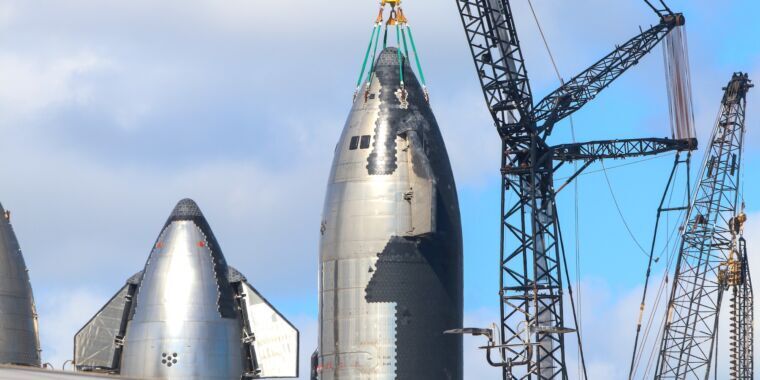- cross-posted to:
- [email protected]
- cross-posted to:
- [email protected]
NASA is keen on demonstrating orbital refueling technology, an advancement that could lead to propellant depots in space to feed rockets heading to distant destinations beyond Earth orbit. In 2020, NASA announced agreements with four companies—Lockheed Martin, United Launch Alliance, SpaceX, and a Florida-based startup named Eta Space—to prove capabilities in the area of refueling and propellant depots using cryogenic propellants.
These cryogenic fluids—liquid hydrogen, methane, and liquid oxygen—must be kept at temperatures of several hundred degrees below zero, or they turn into a gas and boil off. Russian supply freighters regularly refuel the International Space Station with hydrazine and nitrogen tetroxide, room-temperature rocket propellants that can be stored for years in orbit, but rockets using more efficient super-cold propellants have typically needed to complete their missions within hours.
NASA and industry engineers want to extend this lifetime to days, weeks, or months, but this requires new technologies to maintain the propellants at cryogenic temperature and, in some cases like Starship, to transfer the propellants from one vehicle to another.
This test would involve transferring super-cold propellant from one tank to another inside a Starship spacecraft. It’s a precursor to future, more complex demonstrations involving two giant Starships docked together in Earth orbit. Then SpaceX will be ready to send a Starship toward the Moon for a test landing without astronauts onboard. Once that is successful, NASA will clear Starship for a crew landing on the agency’s Artemis III mission, marking the astronauts’ return to the lunar surface for the first time since 1972.
Lakiesha Hawkins, deputy associate administrator for NASA’s Moon to Mars program office, discussed the Artemis schedule Monday with a committee from the National Academies charged with reviewing the agency’s workforce, infrastructure, and technology programs.
Hawkins did not verbally address SpaceX’s plans for the next Starship test flight, but one of her slides noted SpaceX is “moving quickly” toward the third Super Heavy/Starship launch, and that this flight “will include a propellant transfer demonstration.”
However, Jimi Russell, a NASA spokesperson, suggested to Ars this is still only a possibility. When it does happen, the tank-to-tank propellant transfer within Starship will demonstrate moving 10 metric tons of liquid oxygen, according to the 2020 Tipping Point award terms. SpaceX is collaborating with NASA’s Glenn Research Center and Marshall Space Flight Center on the demonstration.



Won’t it need to like not explode and actually make it to orbit first?
They can test both at once. They’re probably much more confident this attempt will get into orbit, too.
Yes, that is correct. Any on-orbit propellant transfer tests are obviously contingent on the ship making it to orbit in one piece.
S25 is dead. Long live S28!